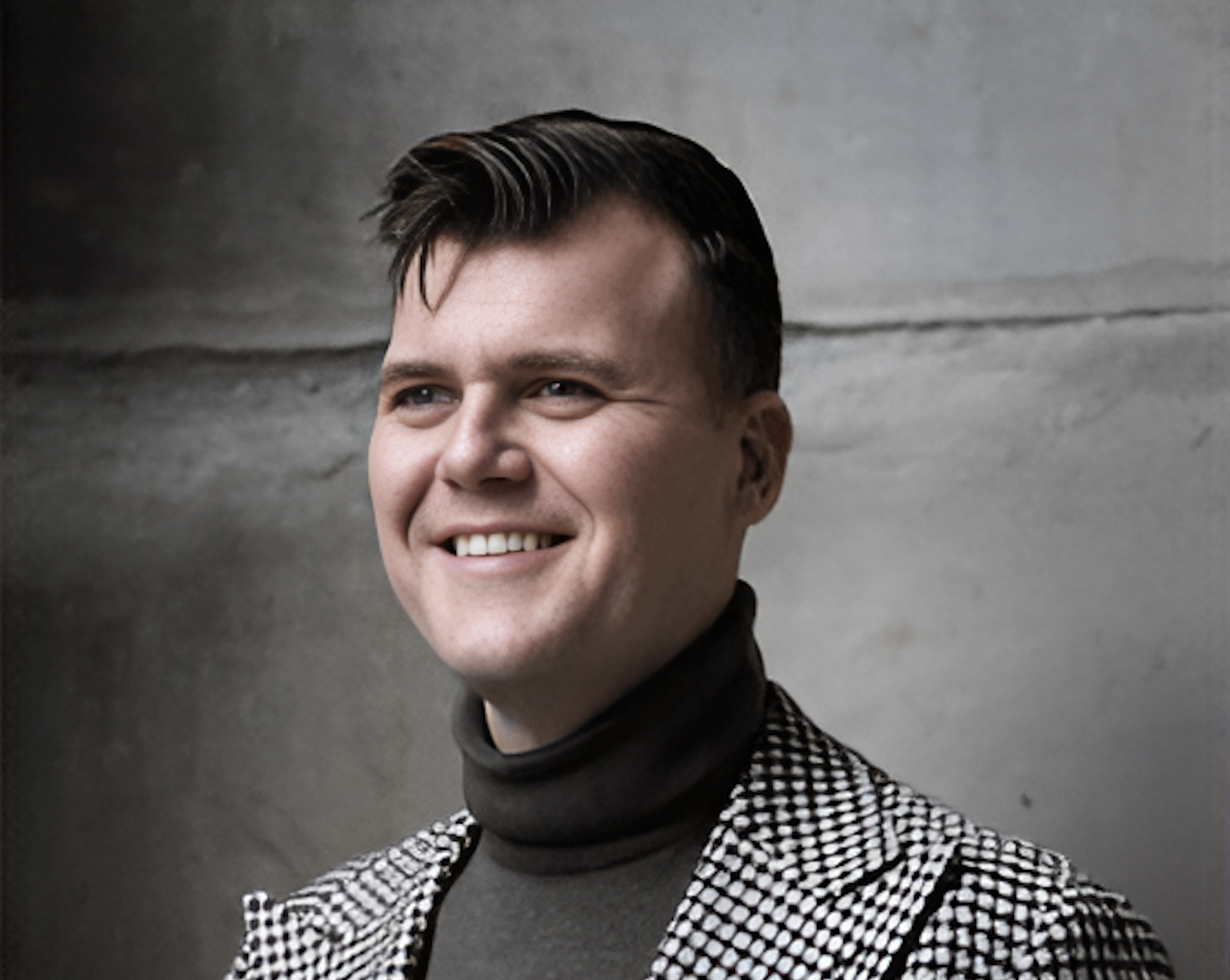Currently serving as the Head of Corporate Communications at MaintainX, Justine Crosby has mastered the art of strategic storytelling. From her 13-year tenure in brand, marketing and communications at Autodesk, to scaling communications at Bright Machines from Series A through their $1.6 billion SPAC, Justine has developed a unique perspective on how effective narratives are capable of driving outsized business outcomes. Throughout her career, she has consistently demonstrated that communication isn’t just about conveying information, it’s about creating meaningful connections that translate into growth.
In our recent conversation, Justine shared insights on building communications infrastructure from scratch, making complex technical concepts more easily digestible, and fostering productive relationships with media and industry analysts. Drawing from her experience with technical products across the industrial technology landscape, she offers a blueprint for communicators looking to craft compelling stories that resonate with diverse audiences, including her current focus on the often overlooked “deskless workforce,” or workers without a traditional office setting or workspace assigned to them, which makes up 80 percent of workers globally.
Enterprise vs. startup communications
The contrast between established public enterprises and growth-stage startups extends far beyond company size and resources, it fundamentally changes communication strategy execution. For Justine, the most significant difference comes down to the pace and scale of experimentation.
“At Autodesk, we had well-established processes and frameworks that provided great stability, but also meant that any change, no matter the significance, needed more validation and buy-in,” Justine said. “In startups like MaintainX and Bright Machines, we can quickly test new approaches, and if something isn’t working, you can pivot within days rather than months.”
While established companies benefit from extensive marketing resources and brand equity built over decades, the ability to rapidly test and iterate gives startups an agility advantage. Justine noted that each environment taught her valuable lessons, and at times, through challenging experiences.
“At Bright Machines, I pushed out a company announcement without fully looping in all stakeholders, thinking speed was everything,” she said. “The follow-up ‘urgent’ meetings taught me that even quick decisions need the right people in the room. Conversely, I remember feeling frustrated by what seemed like endless approval cycles at Autodesk, only to learn that careful stakeholder alignment led to much stronger, company-wide adoption.”
These contrasting experiences have shaped her approach to communications strategy. Today, Justine focuses on finding what she calls “that sweet spot between speed and thoroughness” — combining the calculated risk-taking of startup culture with the systematic thinking that drives lasting adoption in larger organizations.
Seeing bigger-picture narratives
Justine’s role at Autodesk transformed drastically over her 13-year tenure, taking her from brand management to ultimately advising C-Suite executives on customer and media engagement.
“I started as a brand manager focused on sustainability and other thought leadership initiatives, which turned out to be such a fortunate entry point,” Justine said. “Instead of being siloed in one product area, I got to work across organizations and with different leaders. This broad exposure was invaluable because I could see how everything connected, from product strategy to industry trends.”
This cross-functional visibility gave Justine unique insights into the bigger picture of Autodesk’s business and vision, preparing her for a role supporting executive-level communications. As she moved up in the organization, she recognized that executive leaders need to communicate differently than product managers.
“What really shaped my perspective on executive communications was seeing how C-suite leaders needed to speak to different audiences,” Justine said. “They’re not just talking about products; they’re discussing industry transformation, market dynamics, and long-term vision. My background in looking at the bigger picture, rather than just individual product features, helped me understand and support those kinds of conversations.”
The ability to translate complex business strategies into clear narratives became a cornerstone of Justine’s approach to communications — a skill that would later prove essential when building communications functions from scratch at emerging companies.
Building communications infrastructure from scratch
Justine joined Bright Machines as employee seven when the company was still in stealth mode. Her first task was building the communications and brand elements from the ground up. In fact the company was at such an early stage that it was yet to be named and this was one of the first projects she worked on with the leadership team.
“It was truly an education in building a company,” Justine said. “It was amazing to be at the forefront of developing the core messaging, value propositions, brand identity, company culture and so much more. I joined in August and we launched in October with a Series A raise of $170M. Those were incredibly long but rewarding days!”
During her nearly five years at Bright Machines, she helped the company navigate multiple funding rounds, leadership changes and even a SPAC merger (the combination agreement was eventually terminated). This journey of rapid growth revealed important principles about establishing strong foundations while remaining adaptable.
“What I learned is that you need to be incredibly flexible, but also systematic,” Justine said. “When you’re building communications from scratch, you need to prioritize establishing your core message and basic processes first, then layer on complexity as you grow. The tricky part is maintaining that foundation while the company is rapidly evolving.”
This experience shaped Justine’s perspective on what early-stage companies should prioritize when resources are limited and competition for attention is fierce — these are insights she now brings to her day-to-day at MaintainX, where she helps build brand awareness for its maintenance and asset management platform.
Advice for early-stage companies seeking media coverage
For early-stage founders with limited PR resources, the path to meaningful media coverage requires targeted approaches that go beyond simply chasing press hits.
“You need to be strategic and realistic here, especially when you’re in a crowded space,” Justine said. “I’ve found that the most effective approach is to start by building solid relationships with industry publications. These might not be Wired or The Wall Street Journal, but ones that still reach your actual target audience.” These industry-specific relationships often serve as a foundation for a broader media presence down the line.
“I’m a big believer in using contributed content and industry awards as part of a communications strategy. They help build credibility and relationships that you’ll need when you’re ready for bigger announcements,” Justine said. “Remember, PR isn’t just about getting press hits, it’s about supporting your go-to-market strategy. Every piece of coverage should help tell your story and reach potential customers.”
When helping companies secure their first significant media coverage, Justine begins by identifying and highlighting the core story elements that would genuinely interest journalists.
“The first thing I always do is sit down with the leadership team and ask, ‘What’s your dream headline?’ This helps uncover not just what they want to say, but why they think it matters,” Justine said. “From there, we work backward to identify the concrete elements that would support that story.”
This process often involves navigating the gap between what founders want to communicate and what media outlets consider newsworthy.
“You have to be willing to have tough conversations about what’s newsworthy. Sometimes the story you want to tell isn’t the one that will get coverage,” Justine said. “You need to find the intersection between what you want to say and what journalists actually care about. It’s also important to understand that meaningful coverage isn’t just about volume, one really solid story in the right publication can be worth more than 10 superficial mentions.”
Making complex technical narratives digestible
In the industrial technology sector, communicating sophisticated technical concepts presents unique challenges for marketing professionals with non-engineering backgrounds.
“I’ll be honest, as someone who isn’t an engineer, I’ve had moments working with these three very technical companies where I felt out of my depth,” Justine said. “The first thing I learned is that you can’t be afraid to ask questions, even if they seem basic. You can’t simplify something you don’t understand yourself.”
At MaintainX, Justine focuses on the the people who keep the world’s machines and operations running. The target demographic fundamentally shapes the company’s communication strategy and provides a powerful lens through which to view product development and brand positioning.
“Our founders identified something really interesting, while there were other computerized maintenance management system (CMMS) providers out there, most weren’t really thinking about where their users work. Our users are primarily in the field, on shop floors, and in manufacturing facilities, not behind desks. This insight influences our brand approach,” Justine said.
Instead of leading with technical jargon, Justine’s approach centers on real-world experiences and applications, creating narratives that resonate on a more relatable level to the average person.
“The key is to focus on the human element. What problem are we actually solving? Technical credibility matters, but it should support the narrative, not become the narrative itself,” Justine said. “We’re creating solutions for the real world where our users live and work. It’s about understanding their daily challenges and demonstrating how we’ve designed specifically for their needs. This approach has built authentic trust with our audience because they see themselves in our messaging and stories.”
Building productive relationships with media and industry analysts
Effective media relations require genuine investment and relationship-building rather than approaching it from a purely transactional standpoint. This principle guides how Justine advises founders to engage with journalists.
“You have to invest the time, there’s no shortcut here,” Justine said. “I’ve learned that journalists aren’t interested in being sold to, they’re interested in good stories and valuable insights. Read what they’re writing, understand their beat, and engage with them about their work.”
The foundation of these relationships stems from authenticity and setting appropriate expectations about what a company can deliver. This approach extends beyond media to industry analysts as well.
“Be genuine in your interactions. Share insights that might help them, even if it doesn’t immediately benefit you. And always set realistic expectations. Nothing damages a relationship faster than overpromising and underdelivering,” Justine said.
When it comes to building credibility with industry analysts, Justine emphasizes depth and transparency rather than surface-level engagement.
“The key here is consistency and substance. Analysts are looking for meaningful insights and real data points. Be transparent about both your successes and challenges,” Justine said. “I’ve found that they appreciate companies that can articulate not just what they’re doing, but why it matters in the broader industry context.”
This strategic approach to relationship building pays dividends over time, particularly for companies seeking to establish themselves as industry leaders.
“Regular briefings are important, but make sure you’re bringing something new to each conversation. Don’t just talk about your product, demonstrate your understanding of industry trends and challenges. Analysts want to engage with companies that are thinking deeply about the industry’s future,” she said.
Navigating the evolution of communications
Corporate communications has evolved significantly over the past decade, transforming from a tactical function into a strategic cornerstone within organizations. Today, it serves as a crucial force for aligning all communication initiatives with company goals, managing change effectively, and shaping the company’s identity both internally and externally.
“What’s fascinating about today’s corporate communications is how it’s moved from the periphery to the center of strategic decision-making,” Justine said. “We’re now essential partners in driving business outcomes, with a seat at the table during major organizational shifts and initiatives. At the same time, there’s been a dramatic shift toward personalization and authenticity, stakeholders expect genuine, transparent communication tailored to their specific concerns.”
It’s hardly breaking news that AI is reshaping the communications landscape, but what’s noteworthy is how quickly it’s becoming an essential part of the strategic communicator’s toolkit. Justine has embraced these tools as practical enhancements to her process rather than replacements for strategic thinking.
“It’s fascinating how AI is becoming a practical tool in our day-to-day work. I personally use it to gather and analyze articles, reports, and key resources related to a topic, help generate content and campaign ideas, and review plans to ensure I haven’t missed any critical elements,” she said. “I’ve found that using the Persona, Objective, Parameters technique for prompts produces the best results when working with these tools.”
However, she emphasizes that technology alone isn’t enough to create impactful communications.
“The human element remains absolutely crucial. A sharp, thoughtful message crafted with genuine insight will always win out, especially in a world increasingly flooded with endless reams of AI-generated content. What we’re seeing is that as AI becomes more prevalent, the value of truly distinctive, authentic communication grows exponentially. The technology helps us work smarter, but the strategic thinking behind the message is what creates real differentiation.”
Justine foresees these advances creating new opportunities for strategic communicators while simultaneously increasing expectations for authentic engagement.
“Looking ahead, AI will become more integrated into corporate communications, but I hope in a way that enhances rather than replaces human creativity. The best outcome will be that it will handle more of the routine tasks like coverage monitoring and initial drafts, giving comms professionals more time to focus on human-centrcl activities like storytelling and relationship building.”
These advancements are democratizing the communications landscape, leveling the playing field between organizations of different sizes. Smaller teams can now leverage the same powerful tools that were once the exclusive domain of large agencies with substantial resources.
“At the end of the day, nothing will replace the need for authentic human relationships and strategic thinking,” she said. “The key will be balancing all these elements to create communications that resonate and move the needle from a business point of view. The future belongs to those who can harness AI as an amplifier for human creativity, not a substitute for it.”
Related Articles

The Portfolio Approach to Growth: How George Bonaci Builds Sustainable Demand Generation
George Bonaci unpacks the frameworks he uses to build high-performing growth engines. His approach is anchored in three core principles:…

Coenraad van der Poel: Scaling GTM Teams in the US and Beyond
Crew Capital’s Dylan Reider and Sonia Damian recently sat down with Coenraad van der Poel to discuss lessons from his…

Jess Forrester: Accelerating Growth through Strategic Hiring, Product Positioning, and Demand Generation
Crew Capital recently hosted a roundtable discussion featuring Jess Forrester, where she shared invaluable insights with our portfolio companies. The…








